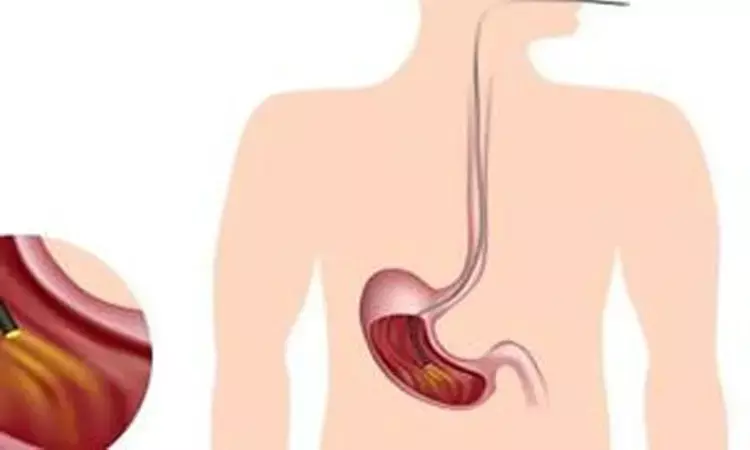- Home
- Medical news & Guidelines
- Anesthesiology
- Cardiology and CTVS
- Critical Care
- Dentistry
- Dermatology
- Diabetes and Endocrinology
- ENT
- Gastroenterology
- Medicine
- Nephrology
- Neurology
- Obstretics-Gynaecology
- Oncology
- Ophthalmology
- Orthopaedics
- Pediatrics-Neonatology
- Psychiatry
- Pulmonology
- Radiology
- Surgery
- Urology
- Laboratory Medicine
- Diet
- Nursing
- Paramedical
- Physiotherapy
- Health news
- Fact Check
- Bone Health Fact Check
- Brain Health Fact Check
- Cancer Related Fact Check
- Child Care Fact Check
- Dental and oral health fact check
- Diabetes and metabolic health fact check
- Diet and Nutrition Fact Check
- Eye and ENT Care Fact Check
- Fitness fact check
- Gut health fact check
- Heart health fact check
- Kidney health fact check
- Medical education fact check
- Men's health fact check
- Respiratory fact check
- Skin and hair care fact check
- Vaccine and Immunization fact check
- Women's health fact check
- AYUSH
- State News
- Andaman and Nicobar Islands
- Andhra Pradesh
- Arunachal Pradesh
- Assam
- Bihar
- Chandigarh
- Chattisgarh
- Dadra and Nagar Haveli
- Daman and Diu
- Delhi
- Goa
- Gujarat
- Haryana
- Himachal Pradesh
- Jammu & Kashmir
- Jharkhand
- Karnataka
- Kerala
- Ladakh
- Lakshadweep
- Madhya Pradesh
- Maharashtra
- Manipur
- Meghalaya
- Mizoram
- Nagaland
- Odisha
- Puducherry
- Punjab
- Rajasthan
- Sikkim
- Tamil Nadu
- Telangana
- Tripura
- Uttar Pradesh
- Uttrakhand
- West Bengal
- Medical Education
- Industry
Simple Airway Device Slashes Hypoxemia Risk During Endoscopy: Study Shows

China: Using a simple nasopharyngeal airway before painless gastrointestinal endoscopy can dramatically cut the risk of dangerous oxygen drops in obese outpatients, new research in Respiratory Medicine has reported.
The prospective randomized trial found that inserting the soft airway tube ahead of the procedure nearly eliminated hypoxemia—episodes of low blood oxygen—without causing extra discomfort or complications.
The study compared standard practice with the use of a prophylactic nasopharyngeal airway in adults with obesity scheduled for outpatient endoscopy under intravenous sedation. Hypoxemia is a common concern during these procedures because sedative medications can relax upper airway muscles and narrow breathing passages, a problem made worse by excess weight. Researchers set out to see whether inserting a small, flexible airway through the nose before starting the endoscopy could prevent those episodes.
The trial enrolled 174 participants who were randomly assigned to either receive a nasopharyngeal airway before painless gastrointestinal endoscopy or undergo the procedure without it.
The study revealed the following notable findings:
- Only 2.3% of the 88 patients fitted with the device experienced hypoxemia, compared with 37.2% of the 86 patients in the control group, a difference described as striking by the authors.
- Oxygen saturation after the procedure remained higher in the airway group, with no differences noted in vital signs during insertion or removal.
- Airway placement was quick and straightforward: of 87 successful insertions, 69 were completed in under five seconds and 18 within ten seconds, with only one patient needing a second attempt.
- Discomfort was minimal, as every participant reported a visual analog pain score of 3 or less.
- Both endoscopists and anesthesiologists reported higher satisfaction when the airway was used, citing fewer interruptions and smoother procedures.
- The additional step did not increase the risk of gastrointestinal complications or other adverse events, and no serious side effects were reported, confirming the device’s safety profile.
- Although arterial blood gas analysis was not performed and standard non-invasive monitoring was used instead, the randomized design and consistent results strengthen confidence in the findings.
Given its low cost, speed of placement, and strong protective effect, the nasopharyngeal airway may represent an easy upgrade to current sedation protocols for obese patients. Keeping the upper airway open and maintaining oxygen flow reduces the likelihood of sudden desaturation and the need to pause or abort procedures.
The investigators conclude that routine use of a prophylactic nasopharyngeal airway offers a practical, well-tolerated method to enhance safety in outpatient gastrointestinal endoscopy for individuals with obesity. Broader adoption, they suggest, could lower complication rates and improve overall patient and clinician satisfaction without adding significant time or expense to the procedure.
Reference:
Peng, Y., Deng, L., Dai, S., Xiang, D., Zhou, R., Zhang, X., Tian, L., Zhou, Y., Chen, W., & Zhou, J. (2025). Nasopharyngeal airway relieves upper airway obstruction to alleviate hypoxemia during painless gastrointestinal endoscopy for obese outpatients: A prospective randomized controlled trial. Respiratory Medicine, 108359. https://doi.org/10.1016/j.rmed.2025.108359
Dr Kamal Kant Kohli-MBBS, DTCD- a chest specialist with more than 30 years of practice and a flair for writing clinical articles, Dr Kamal Kant Kohli joined Medical Dialogues as a Chief Editor of Medical News. Besides writing articles, as an editor, he proofreads and verifies all the medical content published on Medical Dialogues including those coming from journals, studies,medical conferences,guidelines etc. Email: drkohli@medicaldialogues.in. Contact no. 011-43720751
Next Story


